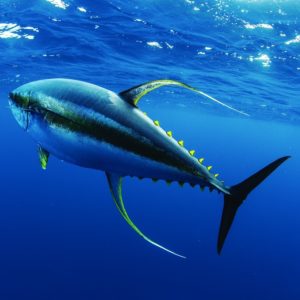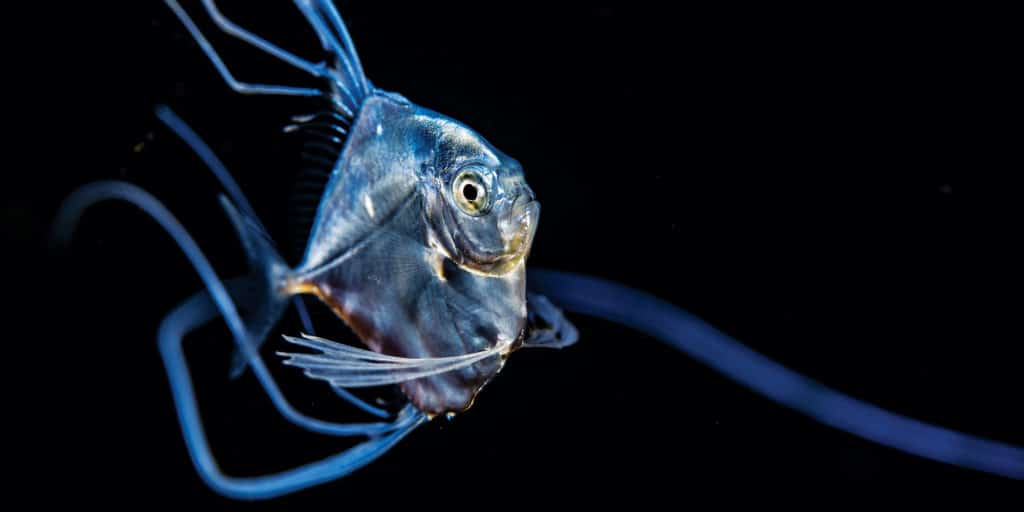
Virtually every multicellular animal possesses the same innate drive: Live long enough to reproduce, preferably as many times as possible over the course of a life span. More progeny reaching adulthood and spawning age translates to more genes staying in the proverbial gene pool.
Scientists have long referred to this as “fitness.” The more genes from an animal in a population, the fitter the animal. Failure to reproduce at all makes you a Darwinian zero. Even among nonscientists, reproduction is pretty well-understood in our mammalian world. Males and females swap genes through copulation, and fertilization occurs internally. Then, for the most part, offspring develop within the mother until birth. I say “for the most part” because a few mammalian oddballs indeed do lay eggs. Yes, I’m looking at you, spiny anteaters and platypuses.
The piscine world, however, is very different. Fish have evolved a bewildering assortment of reproductive strategies that span the gamut from mundane to freaky to downright unbelievable. So, let’s take a glimpse at some of these unusual adaptive strategies.
The Basics of Fish Reproduction
To understand fish reproduction, here are a few important life‑history parameters.
• Age of maturity: The age, on average, when a given species is capable of reproducing. This is usually based on females — males don’t matter as much. Once fish become reproductively mature, they stay that way. There’s little evidence of sexual senescence (i.e., getting too old to reproduce) in fishes.
• Fecundity: This parameter relates to the number and size of eggs produced. Bigger fish produce disproportionately more eggs than smaller individuals.
• Spawning frequency: Semelparous fish, such as small forage fishes and even larger species such as salmon, spawn only once during their lifetime. On the other hand, iteroparous species spawn multiple times over their lifetime.
As with most things in life, we see trade-offs associated with these parameters. For example, developing gametes, especially eggs, is an energetically costly process. Shunting energy into reproductive organs takes away available energy for growth.
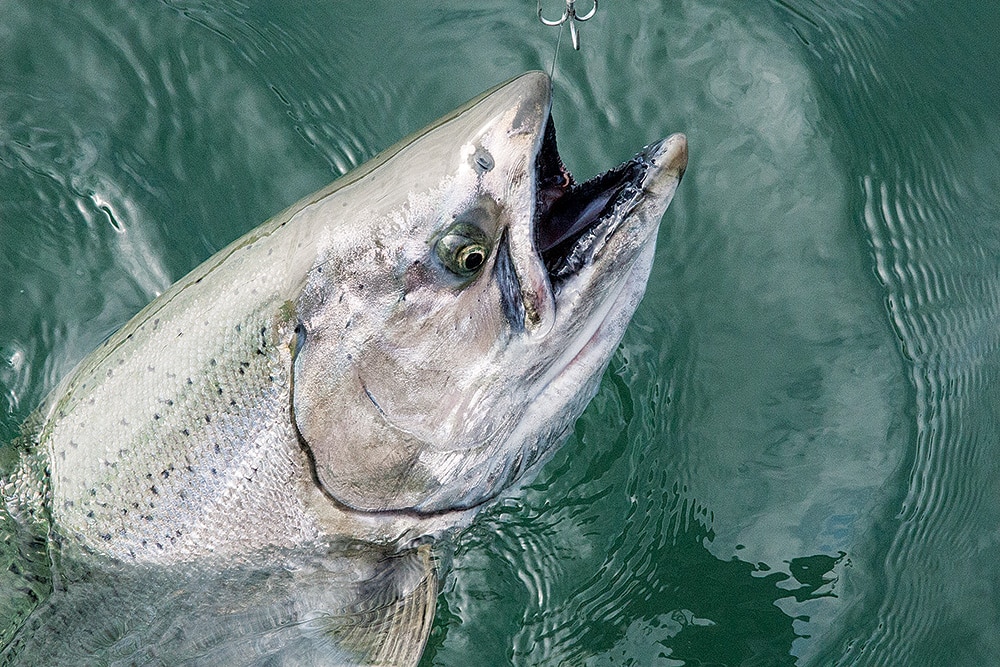
Such a physiological strategy works fine for fish that have short life spans because there’s extra urgency to reproduce at least once before they die. However, this isn’t necessarily the best path for species that live longer because exerting energy into reproduction early impedes growth. And fish need to quickly grow to better avoid natural mortality from larger predators.
Similar trade-offs can be observed with regard to the number and size of eggs produced at a given spawning event. Smaller eggs are less costly in energy to produce, so more can be produced. The downside: Smaller eggs hatch into smaller larvae, which are susceptible to enormously high natural mortality. Bigger eggs hatch bigger larvae and provision the fry for better chances of survival.
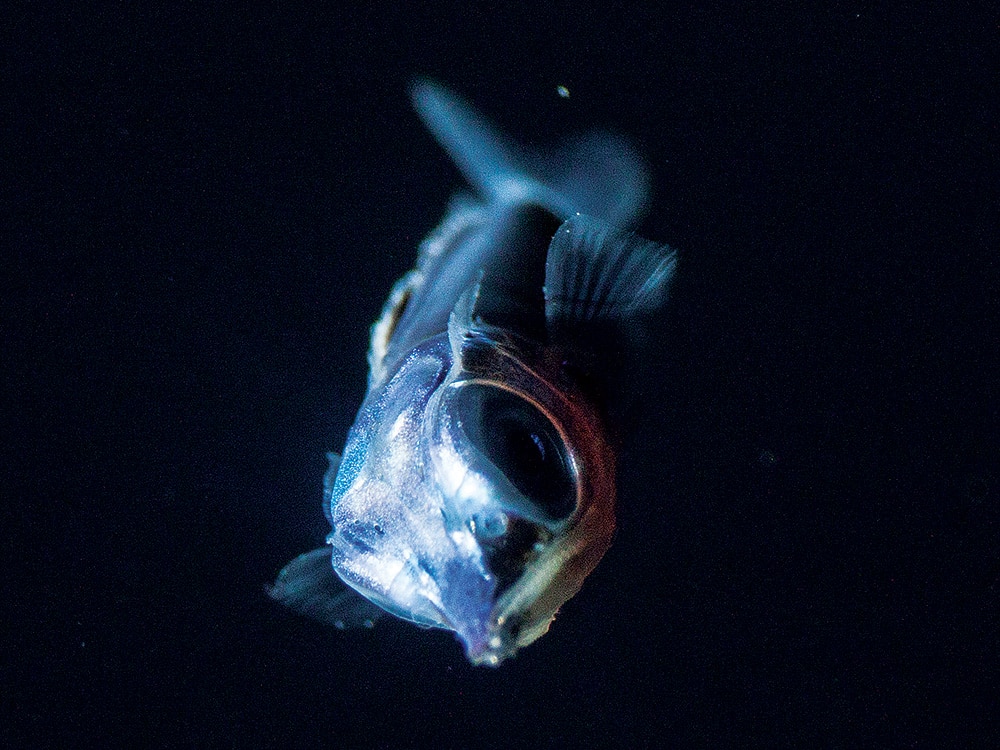
In some cases, such as with select sharks and rays (elasmobranchs), eggs hatch into fully formed juveniles, essentially skipping the larval stage altogether. Some elasmobranchs, such as great hammerhead sharks, exhibit viviparity, or live birth.
Viviparous sharks develop a placental connection to their young and provide additional nourishment during development. Young are born live and at a relatively large size, which enhances survival. Ovoviparous sharks, such as nurse sharks, also give birth to live young, but there is no placental connection to the mother; energy for development is derived exclusively from the egg yolk.
Fish Spawning
Most fish spawn by releasing eggs and sperm directly into the water column to achieve fertilization. This can be done on a one-on-one basis or in a group. Many salmonid species take the more intimate and monogamous approach. One of the benefits of this strategy is that only one male’s sperm fertilizes a batch of eggs. Monogamy is also adaptive in fish such as freshwater cichlids (e.g., peacock bass), males and females of which build nests prior to spawning and protect eggs from potential predators.
Group spawning is widely practiced in fishes and comes with its own suite of advantages. Large aggregations of fish that spawn at the same time might achieve higher fertilization success due to more eggs and sperm in the water at one time. It’s also a tactic that can foil predators that feed on fertilized eggs: By producing so many eggs, the spawners make it virtually impossible for other fish to consume them all, ensuring that at least some eggs survive to hatch.
In the game-fish world, snappers and groupers assemble in spawning aggregations for these exact reasons. However, for centuries anglers have targeted these aggregations because the fish can be more easily caught, which leads to overharvesting in some cases.
For that reason, fishery managers often protect fish with regulations during spawning seasons. After all, common sense dictates that you can’t rebuild a fishery to healthy levels if you hammer the adults while they’re trying to make babies.
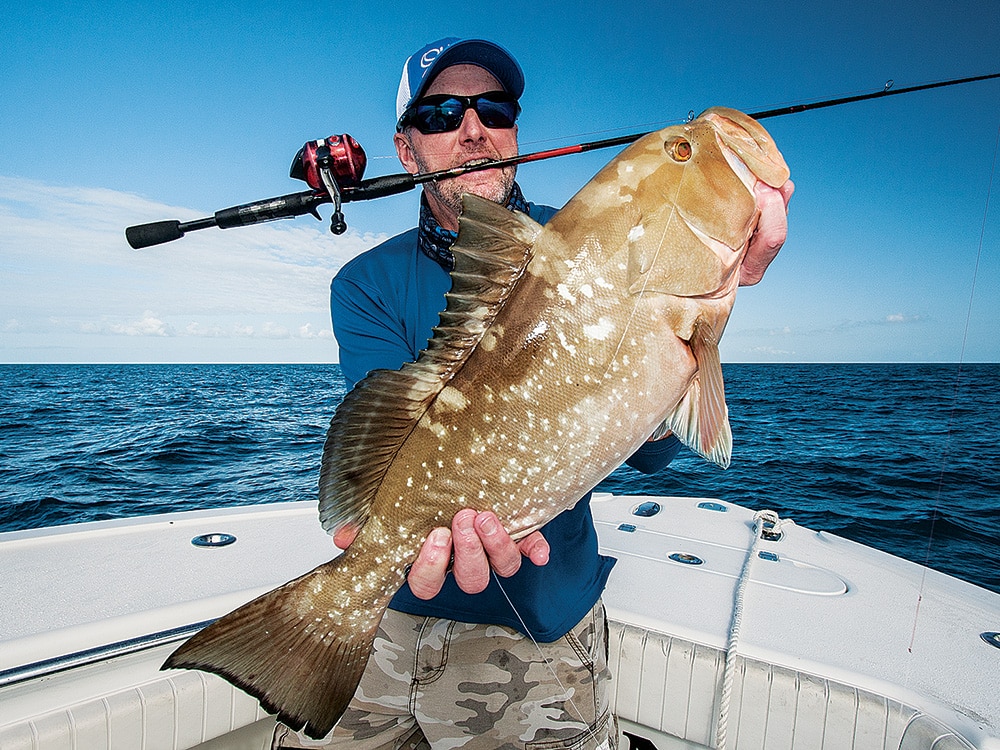
Not all fish reproduce via external fertilization. Cartilaginous fish, such as sharks and rays, actually experience internal fertilization through copulation. Males feature a pair of claspers beneath their pelvic fins. Claspers serve basically the same function as the mammalian penis; they deliver sperm to the female.
Males use only one clasper during copulation. The reason they have two claspers is because the organs develop on the inner margin of the pelvic fins, which are paired. Always better to have a backup, I suppose.
For sharks to copulate, males must maintain contact with the females. Because sharks don’t have hands, they use their teeth for purchase. These love bites generally occur around the head, gills and pectoral fins, and give males the leverage necessary to insert a clasper.
Copulation can appear quite violent. Species such as nurse sharks wrestle and copulate in very shallow water. Pelagic sharks often copulate midwater; once the clasper is inserted, they stop swimming and sink to the seafloor.
Female sharks are also one of the few animals, and perhaps the only fish, that can reproduce without a mate. I’m talking real-life virgin birth, Immaculate Conception stuff here. This asexual reproduction is called parthenogenesis and is thought to have evolved as a response to a lack of mates.
Parthenogenesis has been witnessed in captive bonnethead, blacktip and zebra sharks where no males were present. While this strategy allows the production of offspring in the absence of mates, it’s not thought to be adaptive because it fails to increase genetic diversity in a population.
Do Fish Change Gender?
Fish take gender-bending to an entirely different level. While most species are gonochoristic — with well-defined, separate-sexed individuals in the population — some can be hermaphroditic. Hermaphrodites can possess both male and female reproductive organs. This strategy is actually quite widespread and has been documented in 20 different families of fishes, and includes game fish such as snapper and grouper. What’s even more interesting is that hermaphroditism is thought to be a more recently evolved reproductive strategy than gonochorism.
In most cases, hermaphroditism is sequential: Fish are born one sex, and later, at an older age or larger size, switch to the other gender. As you might expect, there are two ways to go about this. When fish born female switch to male, scientists call that protogyny. Wrasses, parrotfish and a number of groupers, such as reds and blacks, are protogynous hermaphrodites.
Protogyny would be evolutionarily favored in situations where reproductive output in males increases with size faster than that of females. This scenario also favors sexual selection of larger males by females. Large male size is thought to be adaptive in situations in which large males have the capacity to monopolize mating.
Not surprisingly, protogyny is observed most often in species with haremic social dynamics (one male and multiple small females), in which large, dominant males call the shots regarding who mates with whom.
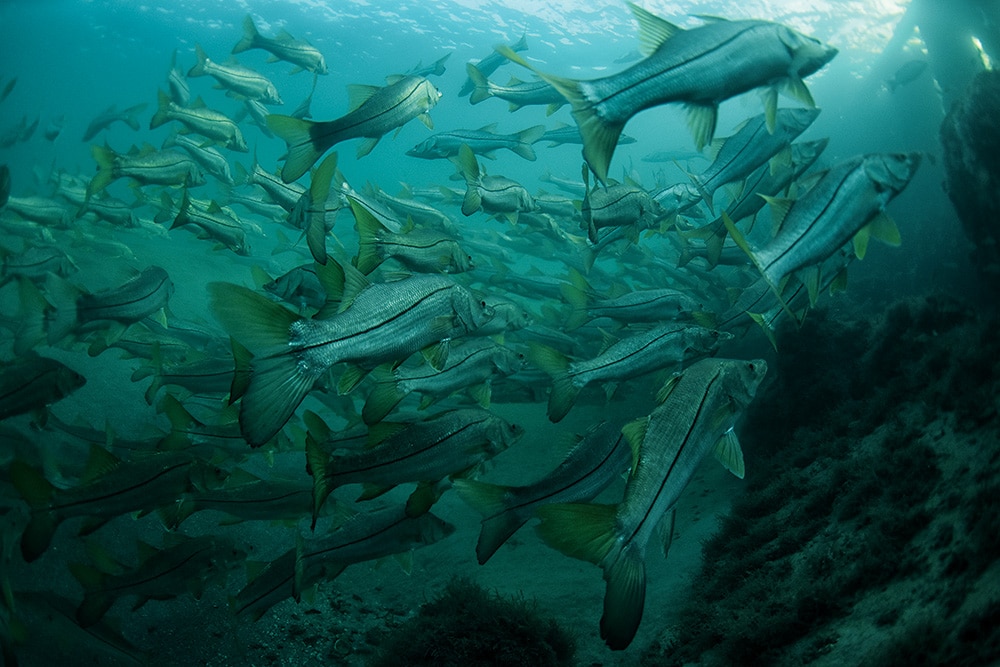
On the other hand, those fish classified as protandrous hermaphrodites are born male and become female at a later size and age. Snook, for instance, are born male. They reach reproductive maturity around 18 inches in length; sexual reversal occurs in the fall after the summer spawn and usually between 1 and 6 years of age.
Protandry makes a lot of sense from a body-size perspective. Sperm are small and energetically inexpensive to produce relative to eggs, and even small males are capable of producing enough sperm to fertilize a nearly countless number of eggs.
Again, egg production requires more energy and space. Bigger females produce disproportionately more eggs than smaller ones.
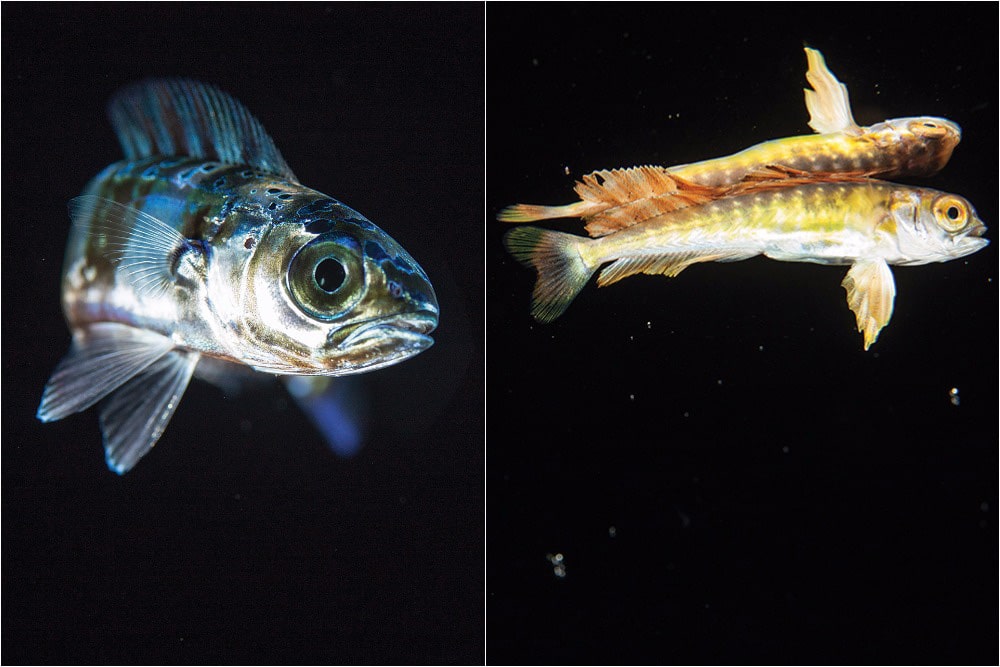
All things considered, you’d think protandry would be favored from a fecundity perspective. The truth, oddly, is that protandry occurs much less frequently than protogyny. Scientists think protandry is rarer because it can often result in male-biased sex ratios that promote an overwhelming amount of excess sperm that’s put to no good use.
A few fish species can produce both eggs and sperm — at the same time. Synchronous hermaphroditism is exhibited by some of the more obscure, smaller members of the grouper family but is usually not found in game fishes.
Even though synchronous hermaphrodites can produce both gametes simultaneously, they rarely self-fertilize. Rather, individuals role-play between male and female during the spawning process with mates. The evolutionary advantage here favors situations where mates are few and far between. In the event such a fish comes across another of its species, it never really needs to worry about being incompatible.
No One Right Way
With more than 33,000 described species, fish represent the world’s most specious and diverse group of vertebrates. With the exception of needing to be wet, they can be found virtually everywhere and can withstand some of Earth’s most extreme environments.
It’s not surprising that, over the millennia, they’ve evolved an amazing array of reproductive strategies aimed at ensuring the proliferation of species.
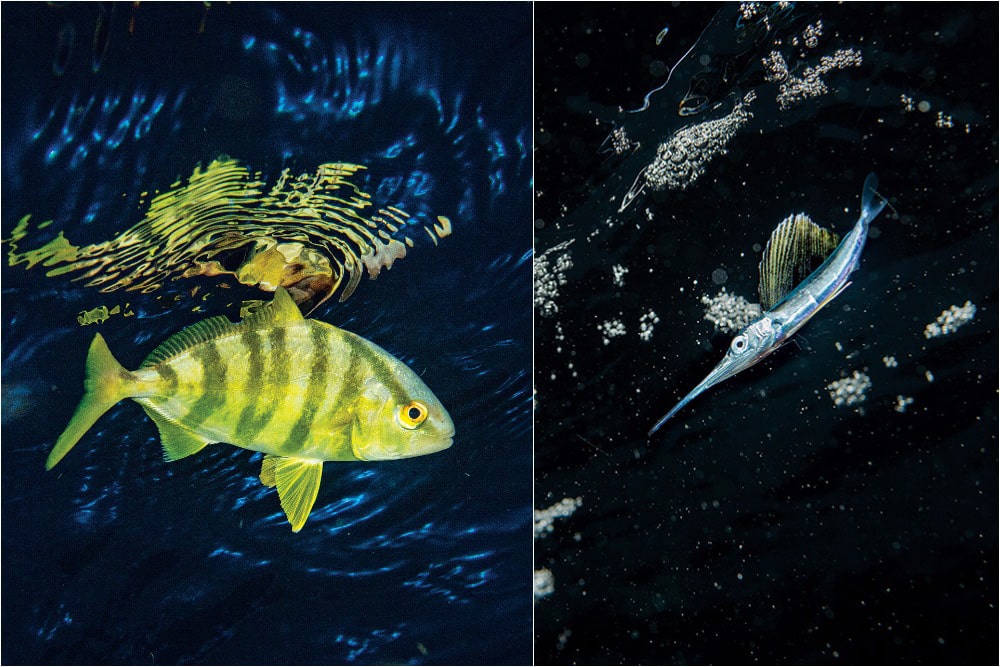
Fish Spawning Glossary
• Embryophagy: the act of one embryo cannibalizing another for food within the mother
• Fecundity: ability to produce an abundance of offspring; fertility
• Gonochorism: having well-defined, separate-sexed individuals in the population
• Iteroparous: species that experiences multiple reproductive cycles over its lifetime
• Oophagy: the act of one embryo feeding on an unhatched egg within the mother
• Oviparous: producing eggs that hatch externally from the female
• Ovoviviparous: when eggs develop and hatch within the female with no placental connection
• Protandrous hermaphrodites: species that begin life as males and later change sex to females
• Protogynous hermaphrodites: species that begin life as females and later change gender to become males
• Semelparous: species that experiences a single reproductive episode before death
• Sequential hermaphrodites: species that possess both male and female reproductive organs
• Viviparous: when eggs develop and hatch within the female with a placental connection
‘Till Death Do Us Part
Ready for something really freaky about fish? The males of certain deep-sea anglerfish take monogamy and sexual dimorphism (distinct differences in size and appearance between genders) to the extreme. The most notable example occurs in Ceratias holboelli: Females are 60 times longer and roughly half a million times heavier than males. Why the difference? Males go looking for love right after they hatch. They don’t possess the characteristic “lure” appendage that females do, but they do come equipped with some extremely large, well-developed eyes, as well as a huge pair of nostrils.
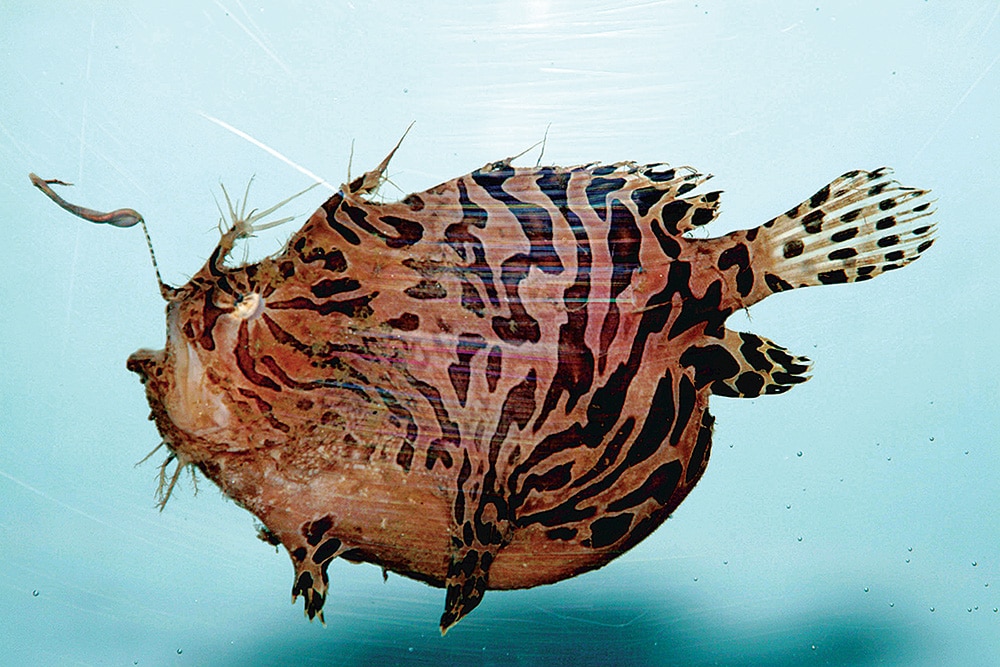
They employ the latter to sniff out pheromones emitted by females. Males also lack teeth and a functioning digestive tract but possess a pincerlike pair of denticular bones. Upon encountering a mate, males latch onto females with their modified teeth and literally never let go. Outgrowths of the jaws and snout grow into the female, and the male essentially becomes parasitic. Nutrition is derived from the bloodstream of the female, and the union triggers sexual maturation of gonads in both male and female.
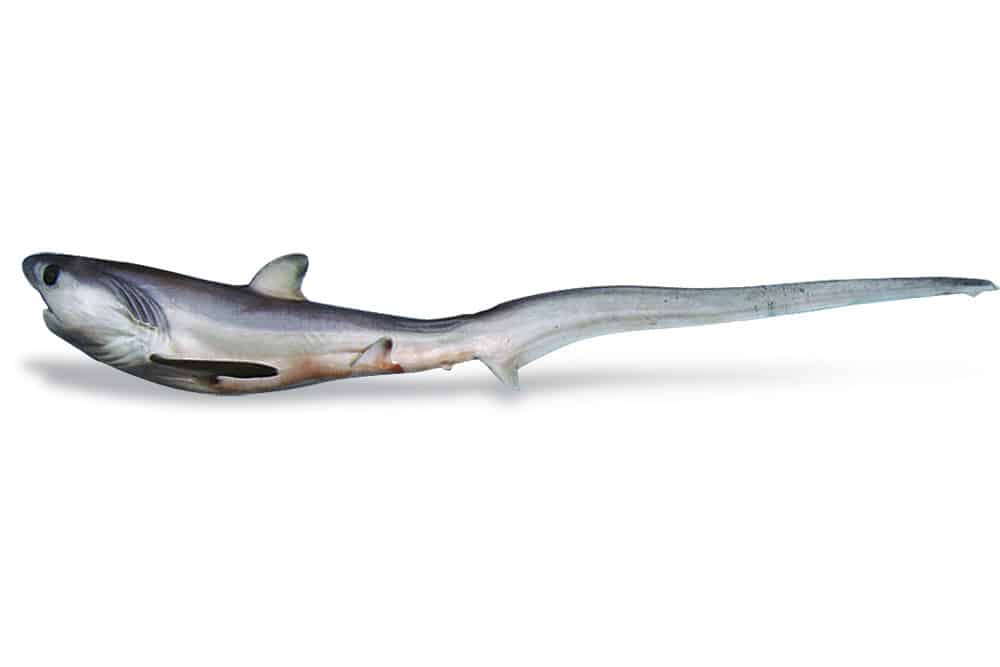
Natural Born Killers
In some sharks, survival of the fittest begins in the womb. Intrauterine cannibalism is practiced by a number of shark species, including tawny nurse sharks, sand tigers, common threshers, porbeagles, makos and whites.
Embryophagy, the act of eating one’s fellow womb mates, is seen in sand tiger sharks. In this particular species, it definitely pays to be the first one to hatch or you might end up as your sibling’s lunch.
A slightly more benign form of intrauterine cannibalism is oophagy, which literally means “egg eater.” In this case, embryos feast on a buffet of unfertilized or unhatched eggs within the mother. Oophagy is very common among lamnid sharks, which include the porbeagle, salmon, mako and great white sharks. With such an early start, it’s little wonder that these fish become such effective predators.
About the Author
Jason Schratwieser is conservation director for the International Game Fish Association and has been working in the field of fisheries management and conservation for the past 17 years. Schratwieser enjoys virtually all types of fishing, especially shallow-water sight-fishing with fly and light tackle.


